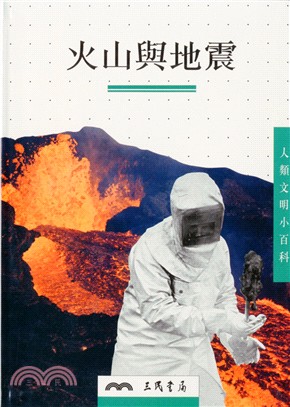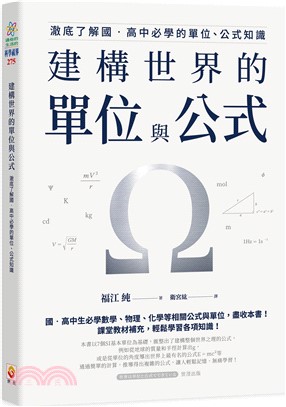The Sino-Soviet Border War of 1969, Volume 1: First Clash at Damansky Island
相關商品
商品簡介
商品簡介
The victory of the communists in the Chinese civil war resulted in the formation of a new socialist state in Asia - the People's Republic of China (PRC). The Soviet leadership was the first to recognize the PRC, and subsequently provided China with considerable economic, scientific, and military assistance. After Stalin's death, however, relations between Moscow and Peking began to rapidly deteriorate, the main reasons being the disagreements regarding Stalin's legacy and the principles of co-existence with capitalist states.
With the beginning of the so-called 'cultural revolution' in the PRC, these disagreements intensified: the two sides in the ideological conflict accused each other of revisionism, dogmatism and nationalism. Economic failures and social chaos forced the PRC leadership (first and foremost, Mao Zedong personally) to seek a method for divesting itself of the responsibility for what had taken place. As a solution, they organized a military conflict on the border with the Soviet Union - one that was adequate enough to mobilize and rally the people around the PRC leadership, while at the same time insignificant enough in scale to prevent it from escalating into a full-fledged war.
On 2 March 1969, a specially prepared Chinese army detachment made a surprise attack on the Soviet border guards who were patrolling the border sector in the area of Damansky Island on the Ussuri River. In the subsequent battle, the dead alone on both sides numbered more than 50. Two weeks later, on 15 March 1969, a much larger battle took place in this same area, in which the two sides used artillery and armored vehicles; the casualties numbered in the hundreds.
There were conflicts along the entire Sino-Soviet border - from Primorye to Central Asia - in the following weeks and months. Although smaller in scale than the Damansky events, men still died in them. Shooting on Damansky continued practically into mid-September.
On 13 August 1969 there occurred one more large-scale military clash, in the area of Lake Zhalanashkol, after which the political leadership of the USSR and PRC recognised the very real possibility that the border war might escalate into a full-scale war, with the potential use of nuclear weapons.
The first volume of this two-part mini-series examines, among other things, the historical and political precursors of the 1969 events, the reaction to them in different countries, and the battle of 2 March 1969. Principal attention is focused on a detailed chronological description of the battle, Soviet and Chinese tactics, and the weapons used. Inasmuch as the present state policies in Russia and China are aimed not only at keeping silent about the 1969 events, but also opposing any attempts to study what happened in detail, the authors have relied on finding veterans of the battles and obtaining from them documentary evidence of those distant events. The authors believe that this study is the most detailed and objective work on the theme of the 1969 Sino-Soviet border war.
With the beginning of the so-called 'cultural revolution' in the PRC, these disagreements intensified: the two sides in the ideological conflict accused each other of revisionism, dogmatism and nationalism. Economic failures and social chaos forced the PRC leadership (first and foremost, Mao Zedong personally) to seek a method for divesting itself of the responsibility for what had taken place. As a solution, they organized a military conflict on the border with the Soviet Union - one that was adequate enough to mobilize and rally the people around the PRC leadership, while at the same time insignificant enough in scale to prevent it from escalating into a full-fledged war.
On 2 March 1969, a specially prepared Chinese army detachment made a surprise attack on the Soviet border guards who were patrolling the border sector in the area of Damansky Island on the Ussuri River. In the subsequent battle, the dead alone on both sides numbered more than 50. Two weeks later, on 15 March 1969, a much larger battle took place in this same area, in which the two sides used artillery and armored vehicles; the casualties numbered in the hundreds.
There were conflicts along the entire Sino-Soviet border - from Primorye to Central Asia - in the following weeks and months. Although smaller in scale than the Damansky events, men still died in them. Shooting on Damansky continued practically into mid-September.
On 13 August 1969 there occurred one more large-scale military clash, in the area of Lake Zhalanashkol, after which the political leadership of the USSR and PRC recognised the very real possibility that the border war might escalate into a full-scale war, with the potential use of nuclear weapons.
The first volume of this two-part mini-series examines, among other things, the historical and political precursors of the 1969 events, the reaction to them in different countries, and the battle of 2 March 1969. Principal attention is focused on a detailed chronological description of the battle, Soviet and Chinese tactics, and the weapons used. Inasmuch as the present state policies in Russia and China are aimed not only at keeping silent about the 1969 events, but also opposing any attempts to study what happened in detail, the authors have relied on finding veterans of the battles and obtaining from them documentary evidence of those distant events. The authors believe that this study is the most detailed and objective work on the theme of the 1969 Sino-Soviet border war.
主題書展
更多主題書展
更多書展本週66折
您曾經瀏覽過的商品
購物須知
外文書商品之書封,為出版社提供之樣本。實際出貨商品,以出版社所提供之現有版本為主。部份書籍,因出版社供應狀況特殊,匯率將依實際狀況做調整。
無庫存之商品,在您完成訂單程序之後,將以空運的方式為你下單調貨。為了縮短等待的時間,建議您將外文書與其他商品分開下單,以獲得最快的取貨速度,平均調貨時間為1~2個月。
為了保護您的權益,「三民網路書店」提供會員七日商品鑑賞期(收到商品為起始日)。
若要辦理退貨,請在商品鑑賞期內寄回,且商品必須是全新狀態與完整包裝(商品、附件、發票、隨貨贈品等)否則恕不接受退貨。
























